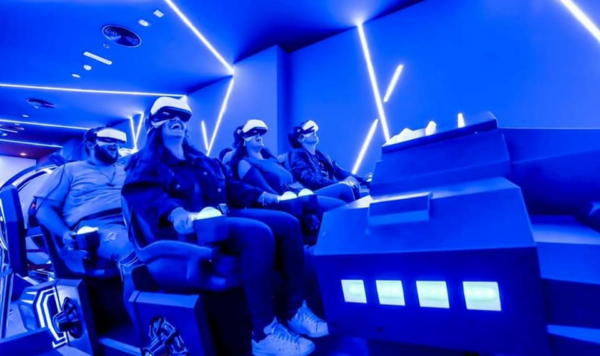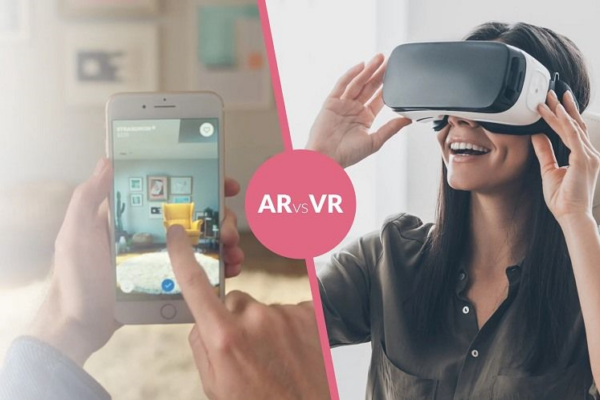

Augmented Reality vs. Virtual Reality

Over the past few years, Virtual Reality (VR) and Augmented Reality (AR) technologies have experienced an unprecedented surge in popularity and widespread usage. These state-of-the-art technologies have captured the fascination of individuals across diverse industries, completely reshaping how we interact with the digital realm. From gaming and entertainment to healthcare and education, VR and AR have revolutionized our experiences, redefining the boundaries of engagement with our environment.

Virtual Reality (VR):
Virtual Reality (VR) is an immersive technology that transports users into a computer-generated environment, providing a simulated experience that can be similar to or entirely different from the real world. By utilizing specialized headsets or goggles with motion tracking sensors and interactive controllers, users are visually and audibly disconnected from their physical surroundings, enabling them to fully engage and explore digitally-rendered realms. VR technology offers a sense of presence and interaction within these virtual environments, creating an unparalleled experience for users.
VR technology comprises several key features and characteristics:
These features and characteristics combine to deliver compelling and transformative experiences, making VR an exciting and evolving technology with significant potential for numerous industries.

Augmented Reality (AR):
Augmented Reality (AR) is a technology that enhances the real world by overlaying digital information or virtual objects onto the user's immediate environment. Unlike Virtual Reality (VR), which immerses users in a completely simulated environment, AR keeps users connected to reality while superimposing digital elements. By blending real-world sensory input with computer-generated content in real-time, AR utilizes cameras, sensors, and displays on devices like smartphones, tablets, and AR glasses to detect the user's surroundings, track their movements, and seamlessly integrate digital content into the real world. This enables users to see and interact with computer-generated objects, information, or experiences that enhance their perception and interaction with the physical world.
AR technology encompasses several key features and characteristics:
These features and characteristics make AR a powerful technology with immense potential to transform industries and create unique user experiences by seamlessly merging the digital and physical worlds.

By comprehending the distinctions and distinctive features of AR and VR, we can delve into their applications across diverse industries and leverage their potential for groundbreaking experiences. As these technologies continue to advance, we can anticipate further innovations and widespread adoption, leading to new possibilities and enriched interactions in our daily lives. These advancements will open doors to new opportunities and revolutionize the way we engage with technology, shaping a future where AR and VR play integral roles in enhancing various aspects of our lives.
As AR and VR technology continues to advance and become more adopted, it is driving us towards afuture where immersive, interactive and transformative experiences are commonplace. AR enriches the real world by seamlessly integrating digital content, while VR transports users to fully realized digital realms. These technologies provide unique benefits and have a profound impact across industries such as gaming, entertainment, training, healthcare, marketing, and more. As these technologies continue to evolve, we can expect even greater enhancements and widespread implementation, revolutionizing the way we interact with the world around us.

Conclusion:
As AR and VR technologies advance further, we can anticipate a wave of revolutionary innovations and widespread integration. Embracing the vast potential of AR and VR will unlock limitless possibilities for enhancing industries, revolutionizing education, elevating entertainment, and transforming our interactions with the world. By embracing these technologies, we open the door to a future where immersive and transformative experiences become the norm, propelling us into a new era of engagement and exploration.
Iphone: +86-18027386365
Email: sales@movie-power.com
Address:No. 42-1 Shixin Road, Panyu District Guangzhou, China.
Whatsapp: 008618027386365